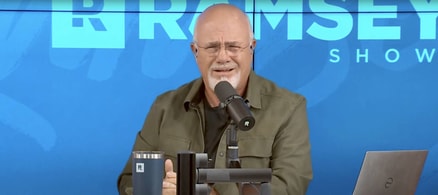What happens at the end of term life insurance policies?

Begin by celebrating that you’ve outlived your policy — no small feat in a dangerous world.
With term life insurance, you pay your monthly or yearly premiums, and if you pass away while it’s active, your dependents receive the death benefit. So what happens when a term life insurance policy matures or expires?
Part of what makes term life insurance famously cheap is the lack of cash value. There’s no cashing out, like some whole or universal life insurance policies. You’re not making an investment; you pay the premiums hoping you don’t need the payout.
Once it expires, your coverage simply stops.
If you’re debt free, mortgage free and the rest of your family is financially independent, that’s perfect. You probably don’t need life insurance anymore because there’s nothing you really need to cover in the case of your death — well, besides the funeral costs.
But if you’re still making payments toward your mortgage or have any dependents, you should consider getting a new policy that suits your current needs.
Stop overpaying for home insurance
Home insurance is an essential expense – one that can often be pricey. You can lower your monthly recurring expenses by finding a more economical alternative for home insurance.
SmartFinancial can help you do just that. SmartFinancial’s online marketplace of vetted home insurance providers allows you to quickly shop around for rates from the country’s top insurance companies, and ensure you’re paying the lowest price possible for your home insurance.
Explore better ratesWhat can you do after your term life insurance policy expires?

If you decide you still need life insurance coverage, you’ll want to make some adjustments. It’s pretty unlikely your new policy will be the same as your old one.
How much longer do you expect you’ll have debts and dependents? How much time and money is left on your mortgage? Are your kids still in school? Let the answers to those questions decide the length and value of your new policy.
Once you’ve figured that out, you’ll need to pick one of the following options:
Renew your term policy
Renewing your current policy is easy but might not be the best option.
It’s pretty standard for insurers to include a feature called guaranteed renewable. That means you won’t need to go through the underwriting process again or get another medical exam to renew.
This could be hugely beneficial to you if your health has deteriorated or you switched to a high-risk job since you took out the initial policy.
The downside? Because insurers aren’t recalculating the real risk you pose in your current state, they set the new rates very high, just in case. If you’re in good health and want to stick with your current insurer, you may want to ask whether you can take a new exam.
Convert your term life insurance into a permanent policy
Many term life policies give you the option of converting your plan to a permanent policy. And just like renewing, they don’t require a new medical exam to weigh your risks.
Unlike term life, part of your premium for permanent policies goes toward an investment component and a cash value. Depending on your new product, you may be able to borrow against that value or even surrender the policy later for a lump sum.
But a permanent policy also requires way, way higher premiums — after all, you will die someday, and the company will have to pay out. It might make more sense to take the extra money you’d be paying and invest it in a way that’s right for you.
Purchase a new term life insurance policy
This may be the most affordable route, assuming you’re in good health.
You may need to get a new medical exam, and you can expect to pay more than your previous policy since you’ve grown older. But you’ll get a new opportunity to look at the other insurance companies out there and find the same coverage for a better price.
You can use this tool from Quotacy to quickly compare quotes from a bunch of life insurance companies at once. (It takes less than five minutes and you won’t need to provide any contact information.)
More: Best life insurance companies - compare and save
Remember, even among term life policies, you have plenty of types to choose from:
Level term life insurance: This is the most common type of term life insurance. This policy guarantees that both the premium and the death benefit stays exactly the same (level) for the agreed-upon term. It’s the most popular form because it’s simple; you won’t have to worry about anything changing.
Annual renewable life insurance: These policies start off very affordable, because your premium is always based on the risk that you’ll die in the current year. But to ensure the death benefit remains the same, the rates increase every year. You may end up spending more than you would have with a single, guaranteed rate over the life of the entire term.
Decreasing term life insurance: You can decrease the value of your policy over time. For example, you may need $500,000 in coverage today but only $250,000 in five years. The downside is that the money you save in premiums is nominal for the amount you lose in the death benefit.
Return-of-premium term life insurance: Unlike most forms of term life insurance, this policy allows you to cash out and receive all the money you paid in premiums when it expires. But those premiums are far more expensive, and you miss out on the opportunity to invest all that excess cash.
No-medical-exam term life insurance: Aptly named, this is simply life insurance that doesn’t require a physical. But your premiums will be higher, and your death benefit may not pay out in full until you’ve had your policy for a few years.
Instant decision life insurance: While it normally takes weeks to get life insurance, you can get immediate coverage with instant decision insurance. And yes, we do mean instant. You’ll apply online by answering some health questions. The insurance company then looks at your application, pulls other public data about you and uses algorithms to calculate your risk. In most cases, you can get an offer on the spot.
Group term life insurance: Group life insurance is a benefit that companies sometimes offer to employees at no cost — and it can include options to purchase supplemental coverage or add dependents. But these plans usually require you to keep that job unless you can convert yours to a permanent policy when you leave.
Mortgage protection term life insurance: These policies pay off your mortgage in the event of your death, which is only helpful if you leave behind a large balance on your mortgage. This kind of policy is sold without underwriting, so it could benefit those in poor health if they have trouble getting coverage elsewhere. But the premiums are high and there’s little flexibility, as the payout goes to the lender directly.
Sponsored
Unexpected vet bills don’t have to break the bank
Life with pets is unpredictable, but there are ways to prepare for the unexpected.
Embrace Pet Insurance offers coverage for treatment of accidents, illnesses, prescriptions drugs, emergency care and more.
Plus, their optional wellness plan covers things like routine vet trips, grooming and training costs, if you want to give your pet the all-star treatment while you protect your bank account.






